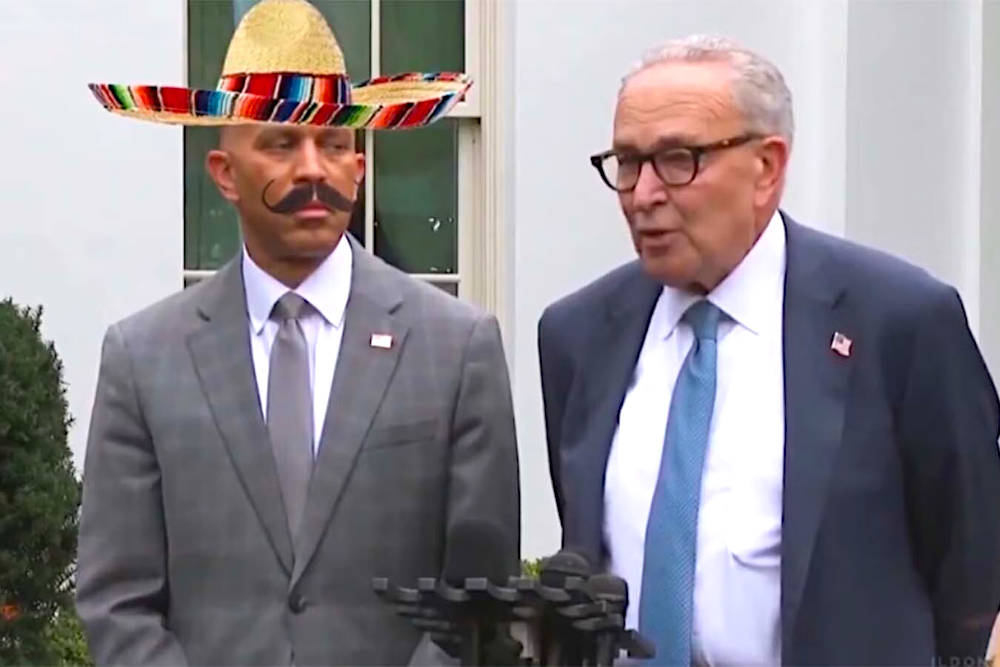
As America faces mounting national debt and inflationary pressures, the debate over government spending has never been more urgent. While federal spending continues to rise unchecked, state-level conservative budgets are demonstrating that fiscal responsibility works—and it works well.
By prioritizing efficiency, limiting waste, and focusing on core responsibilities, conservative-led states are not only protecting taxpayers but also fostering stronger local economies, better public services, and long-term financial stability.
Panaprium est indépendant et pris en charge par les lecteurs. Si vous achetez quelque chose via notre lien, nous pouvons gagner une commission. Si vous le pouvez, veuillez nous soutenir sur une base mensuelle. La mise en place prend moins d'une minute et vous aurez un impact important chaque mois. Merci!
The Federal Spending Problem
Federal spending has surged to record levels in recent years, fueled by:
-
Massive stimulus packages and bailouts
-
Expensive social programs with poor oversight
-
Interest payments on growing national debt
This approach has led to inflation, reduced purchasing power, and increasing skepticism among Americans. Despite high spending, many citizens feel that federal programs are inefficient, wasteful, and slow to respond to local needs.
In short, more spending hasn’t delivered better results—and conservatives argue that the federal government often overreaches at the expense of taxpayers.
Conservative State Budgets: Efficiency Over Excess
In contrast, conservative-led states are proving that smarter budgeting, not bigger budgets, leads to better outcomes.
1. Balanced Budgets Are the Norm
Many red states require balanced budgets by law, meaning spending never exceeds revenue. This prevents deficits from ballooning and keeps taxpayers’ money safe.
2. Prioritization of Core Services
Conservative states focus spending on essential services—education, infrastructure, and public safety—while avoiding overextension into non-essential programs.
3. Lower Taxes Without Cutting Quality
By streamlining government operations, red states can maintain quality public services while keeping taxes low, unlike federal programs that often rely on borrowing or hidden fees.
4. Efficient Management and Accountability
State governments with conservative leadership emphasize performance audits, accountability measures, and transparent reporting, ensuring taxpayer dollars are used effectively.
Success Stories from Red States
Several conservative-led states illustrate how effective fiscal management produces real-world benefits.
Texas
-
Maintains a balanced budget while supporting robust infrastructure and public safety programs.
-
Uses low taxes to attract businesses, boosting revenue without burdening residents.
Florida
-
No state income tax and strong fiscal oversight create surplus funds that can be reinvested in education and emergency preparedness.
Tennessee
-
Streamlined programs and careful spending allow the state to offer competitive public services at lower cost than many federal programs.
These states demonstrate that responsible budgeting promotes both economic growth and public satisfaction.
Why State Budgets Outperform Federal Spending
There are several reasons why state-level conservative budgets often deliver better outcomes than federal spending:
1. Local Knowledge and Flexibility
States understand their unique economic, social, and demographic needs. This allows tailored spending that maximizes impact rather than a one-size-fits-all federal approach.
2. Faster Decision-Making
Red-state governments can respond to crises quickly, whether it’s natural disasters, infrastructure repair, or public safety emergencies—without waiting for federal bureaucracy.
3. Less Political Waste
State programs tend to be smaller, more focused, and free of nationwide political compromise, reducing the potential for waste, inefficiency, and mismanagement.
4. Incentives for Economic Growth
Low taxes and targeted spending attract businesses and residents, creating new revenue streams that fund additional programs naturally without increasing debt.
The Political Impact
The effectiveness of conservative state budgets carries political consequences as well:
-
Residents see direct benefits in job creation, infrastructure improvements, and lower tax burdens, which reinforces support for conservative leadership.
-
Citizens become less dependent on federal programs, increasing local autonomy and reducing federal overreach.
-
Success stories from red states provide a model for national policy reform, demonstrating that fiscal discipline works at scale.
Contrasting Blue-State Spending
Many blue states rely on high taxation and expansive government programs that often underperform. Common issues include:
-
Budget deficits despite high revenue
-
Overcomplicated social programs with limited effectiveness
-
Rising taxes that discourage business investment and drive residents away
-
Slow response to local crises due to bureaucratic inefficiency
While federal spending often mirrors these problems, red-state budgets offer a conservative alternative that achieves more with less.
Practical Lessons for Conservatives
The performance of state-level conservative budgets provides a blueprint for responsible fiscal management at all levels:
-
Balance Budgets by Law: Prevent deficits from accumulating and protect taxpayers.
-
Prioritize Core Services: Focus on education, safety, and infrastructure first.
-
Keep Taxes Low: Attract businesses and residents while funding necessary programs.
-
Emphasize Accountability: Audit and review programs to reduce waste.
-
Encourage Local Economic Growth: Use spending policies to promote entrepreneurship and investment.
These principles ensure that every dollar spent delivers measurable value, unlike federal spending programs that often lack oversight.
How Conservative Budgets Protect Families
Balanced, efficient budgets don’t just help states—they directly benefit families and communities:
-
Lower taxes mean more disposable income.
-
Stable infrastructure and public services improve quality of life.
-
Economic growth provides job opportunities and community stability.
-
Reduced debt burden ensures future generations aren’t saddled with unsustainable obligations.
In other words, conservative budgeting is both fiscally responsible and socially beneficial.
Looking Ahead: The Future of Fiscal Responsibility
As America navigates economic uncertainty, the contrast between federal overspending and conservative state budgets is stark. States that prioritize balanced budgets, efficiency, and growth-friendly policies are emerging as models for national reform.
Red-state successes show that fiscal discipline isn’t just a theory—it’s practical, effective, and replicable. By following these principles, states can maintain prosperity, safeguard taxpayer money, and protect citizens from economic instability.
Conclusion
The evidence is clear: conservative state budgets outperform federal spending in both efficiency and effectiveness. By focusing on balanced budgets, core services, low taxes, and accountability, red states provide tangible benefits to residents while creating thriving local economies.
Meanwhile, federal spending continues to balloon, often producing little real-world benefit while increasing debt and inflation. Conservatives understand that smarter, not bigger, government is the key to prosperity.
For Americans concerned about fiscal responsibility and the future of the economy, the lessons from red states are clear: state-level conservative budgeting works—and it works well.
Call to Action
Support state-level leaders who prioritize balanced budgets, efficient spending, and economic growth. Advocate for policies that protect taxpayers, encourage innovation, and reduce federal overreach.
Because when states manage their money wisely, families thrive, communities prosper, and America strengthens itself from the ground up.
Cet article vous a-t-il été utile ? S'il vous plaît dites-nous ce que vous avez aimé ou n'avez pas aimé dans les commentaires ci-dessous.
Avertissement: Le contenu ci-dessus ne reflète pas nécessairement les opinions de Panaprium. Panaprium ne garantit ni ne cautionne le contenu ci-dessus, et n'en est en aucun cas responsable. Les opinions exprimées ici sont basées sur des expériences personnelles et ne doivent pas être considérées comme une approbation ou une garantie de résultats précis. En raison de la nature subjective de la politique, tout commentaire politique doit être interprété avec un esprit critique.
About the Author: Alex Assoune
Contre Quoi Nous Luttons
Les groupes multinationaux surproduisent des produits bon marché dans les pays les plus pauvres.
Des usines de production où les conditions s’apparentent à celles d’ateliers clandestins et qui sous-payent les travailleurs.
Des conglomérats médiatiques faisant la promotion de produits non éthiques et non durables.
De mauvais acteurs encourageant la surconsommation par un comportement inconscient.
- - - -
Heureusement, nous avons nos supporters, dont vous.
Panaprium est financé par des lecteurs comme vous qui souhaitent nous rejoindre dans notre mission visant à rendre le monde entièrement respectueux de l'environnement.
Si vous le pouvez, veuillez nous soutenir sur une base mensuelle. Cela prend moins d'une minute et vous aurez un impact important chaque mois. Merci.































0 commentaire